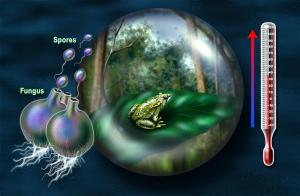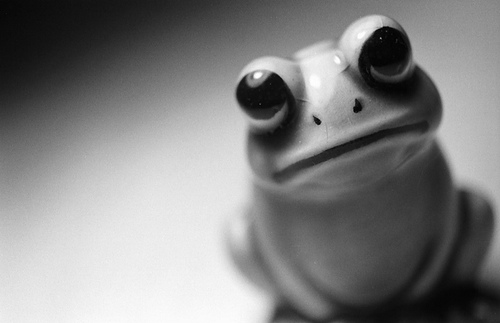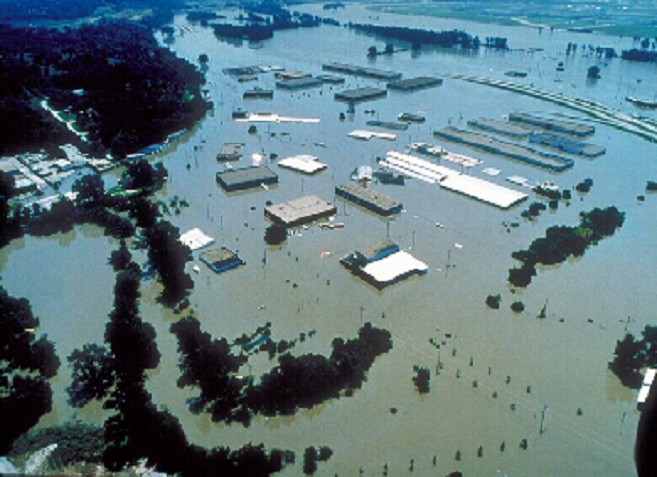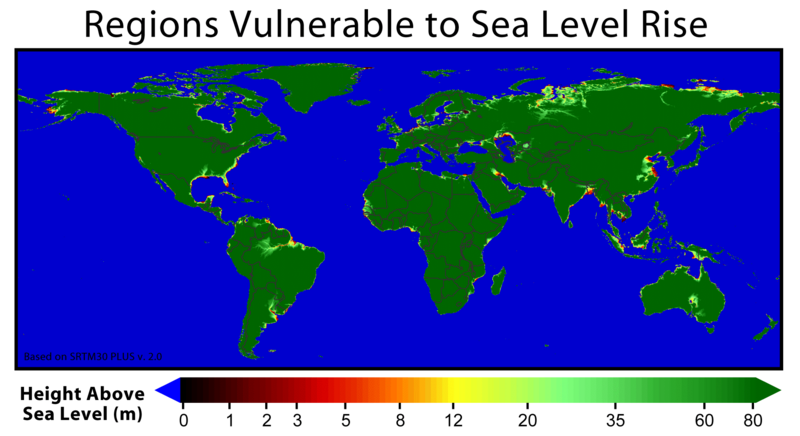There is no doubt that mitigation and reduction in greenhouse gas emissions are crucial in the fight against global climate change. However, there are changes in the climate that we cannot avert any longer. Certain thresholds will be reached, and the consequences suffered, no matter what we do today. But there is still much we can do to avert major losses for those who are most vulnerable.
The key is in adaptation.
Adaptation, as defined by the IPCC, is “adaptations in ecological, social or economic systems in response to actual or expected climatic stimuli and their effects.” Its main goal is to avoid harm from future climate change. Harm can include losses in agriculture, damages to infrastructure, averse effects on human health, and the loss human lives.
However, there are obstacles to development. Specifically, lack of awareness and will, lack of financial resources, weak institutions and governance, erosion of social capital, weakened social and community safety networks, lack of adequate information for those at risk, and little voice given to those at risk. The people most vulnerable to the negative effects of climate change are those already in situations of poverty. Therefore it is important to strengthen top-bottom safety networks (governments, institutions, public services, infrastructure), as well as bottom-up community networks (risk sharing networks, community resources, grassroots organizations, etc).
As outlined in “A Stitch in Time: General Lessons from Specific Cases” by Leary et al. in Climate Change and Adaptation, a way of accomplishing these adaptation goals and overcoming obstacles is to couple the goals of adaptation with those of development. Development is seen as a necessity in many countries, so a lot of resources (including human capital) are being invested into development efforts.
If individuals and organizations can realize the complimentary goals of adaptation and development, they will be capable of implementing dual strategies of adaptation and development in the areas most vulnerable to the negative effects of climate change
Some further reading
WMO Climate Information for Adaptation and Development Needs
Pew Center. Adaptation to Climate Change: International Policy Options
If you haven’t already, watch this movie, “The 11th Hour”.
Tags: adaptation, Andrea Dominguez, development, sustainable development
Educating people is one of the most effective ways of going about mitigating the effects of climate change. Is it happening fast enough? No. Is it feasible to educate the world’s people about the hazardous effects that climate change can have on their lives within the time span we have until its “too late”? Surely not. Is it fair that the people who are least able to do something about it are going to get hit the hardest? Absolutely not. Would the world change fast enough even if every person in the world today was educated about climate change and exactly what they could do about it? Maybe, maybe not.
However, these are the circumstances that we must face. Not as a city or a nation, but a world. Humans must help one another to make a better, less climate change threatened planet. Enough talk about who is to blame, what amount of money the government must spend to mitigate and adapt, or why climate change is questionable. None of those things matter.

We cannot think in terms of money or possessions, but rather in terms of human life and a potential for a future for our species. The U.S., like every other country around the world, will suffer losses in GDP and land area to a sizeable extent. But the developing world has much more to lose- human life (Mann & Kump 111).
The most pressing issue in relation to climate change is information sharing. We need to address the lack of knowledge within the human race and begin to adapt to a future known by very few. As mentioned in Leary et al., creating conditions that allow for action to happen is the goal. There exist barriers in this world that need not exist but for the subsistence of useless actors on the stage.

What I see when I read these articles and books is an opportunity for the developed world to lead- I see a new market, I see hope. But I also see the stereotypical American, eating chips that were packaged in China and produced in Mexico, sitting on a couch, watching TV and doing nothing because they know nothing.
This is a topic that EVERYONE has got to care about.
While I’m no Crocodile Hunter or Jack Hannah, I have an interest in the variations of animals species and their development. When I was reading Dire Predictions by Mann and Kump, one of the subsections in the chapter caught my eye: The Highway To Extinction. Mann and Kump talk briefly about the effects of global warming on the animal kingdom and present a Biodiversity Impact Scale over the course of 100 years–concluding the obvious–as temperatures continue to rise, plant and animal species will die off.
Frustrating, to say the least. We continue to extract the resources from deforestation and lose some of the most beautiful and fascinating creatures. One such creature mention in the book, The Golden Toad, was last seen in Costa Rica in 1988. Studies, such as this one in the science journal Nature talk about the reasons why global warming affected the Golden Toad:
“Published in the Jan. 12 issue of the journal Nature, the study reveals how the warming may alter the dynamics of a skin fungus that is fatal to amphibians. The climate-driven fungal disease, the author’s say, has hundreds of species around the world teetering on the brink of extinction or has already pushed them into the abyss.”

The change in temperature and water levels are bringing about an increase in infectious diseases among species. According to a research study by PSU and OSU (additional reading here, the reasoning behind this is that the deeper water that the frogs are born in, the more likely they are to develop the fungal infection. In western frogs, the mortality rate was 100%.
So, not only are we eliminating our future in the process, we are killing off some famous frogs:
–Kermit The Frog
–The Budweiser Frogs
–Michigan J. Frog
Frogs are not the only ones being effected–as Munn describes it is making it harder for animals like the polar bear to find food due to the melting of the arctic ice cap.
At Copenhagen, let’s do something to get these animals off of the highway to extinction–or miss out on both their global, aesethic, ecological and educational impacts.

Tags: Biodiversity, Golden Frog
Global warming has already begun to impact our sea levels, and is projected to have an impact in the future. According to the fourth assessment report of the IPCC, the sea-level is predicted to rise between .5 and 1.2m by 2100. Further evidence has predicted an accelerated increase in sea levels due to feedback loops like moulins, for example.
The sea level rise is due to melting of continental ice sheets. It is important to differentiate between sea ice and continental ice. Sea i ce, on the contrary to continental ice, does not contribute to changes in sea–level, just as ice melting in a cup of water would not raise the waterline. Continental ice, on the other hand, adds water into the sea.
ce, on the contrary to continental ice, does not contribute to changes in sea–level, just as ice melting in a cup of water would not raise the waterline. Continental ice, on the other hand, adds water into the sea.
The result of further melting of continental ice sheets could be catastrophic. 10% of the world population lives within 10m of sea-level. For other places in the world, the percentage of people within 10m of sea-level is even greater. For example, in Bangladesh, 50% of the population would be submerged in water with a 10m rise in sea-level.
Click here to watch a visual of the sea level rising across the world as temperature increases–> Sea Level Rise
Scientists specifically are concerned with the Greenland and Antarctic continental ice sheets. Why are they concerned, and how realistic are their concerns?
• Melting of the Greenland ice sheet would result in a 6m sea-level rise, submerging most of NYC and Boston.
• Melting of the Greenland ice sheet is already underway
• Unexpected feedback loops may contribute to faster melting of the ice sheets than predicted
• A 5 degrees Celsius rise in temperature would result in partial melting of the Greenland and west Antarctic ice sheets, which would lead to a rise in sea-level of 5-11m.
oThat could wipe out 10% of the world’s population!
Even the predicted sea-level rise of 1m by 2100 would submerge 4,000,000 North Americans with a total of 145,000,000 of the global population. It is clear that continental ice sheet melting is already underway and we must act now in preparation for the sea-level rise.
Mann and Kump outline three stages for adaptation to prepare for rises in the sea-level:
1. Protection through engineering. i.e. building dykes
2. Accommodation inundation. i.e. building flood proof houses
3. And the final stage- coastal retreat. i.e. building sea walls and/or evacuation of regions
Since major civilizations are settled around vulnerable coastal areas, sea level rising poses a threat to humanity, culture, and history. Both mitigation and adaptation will be necessary to combat the potential disasters caused by global warming.
Tags: climate change, floods, Grace Lange, human-induced, mitigation, Sea level rise


Your Comments